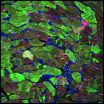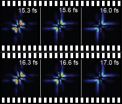(Press-News.org) PHILADELPHIA - Type 1 diabetes (T1D) patients who have developed low blood sugar (hypoglycemia) as a complication of insulin treatments over time are able to regain normal internal recognition of the condition after receiving pancreatic islet cell transplantation, according to a new study led by researchers at the Perelman School of Medicine at the University of Pennsylvania, published online in Diabetes. Severe hypoglycemia--a life-threatening complication of insulin treatment for T1D--can occur when the body's defense mechanisms against low blood sugar are broken down over a long period of time, causing shakiness, irritability, confusion, lightheadedness, shortness of breath, and even seizures or loss of consciousness.
In this study, led by Michael R. Rickels, MD, MS, associate professor of Medicine and medical director of the Pancreatic Islet Cell Transplant Program at Penn Medicine, T1D patients who were suffering from "hypoglycemia unawareness"--when a patient has low blood sugar, but feels no symptoms--were able to internally recognize the condition and automatically increase their own blood sugar to normal levels six months after undergoing islet cell transplantation. Pancreatic islets are tiny clusters of cells within the pancreas that contain several types of cells, including cells that produce insulin to help the body process sugar.
"The results of this study suggest that islet cell transplantation may be an effective treatment for patients with type 1 diabetes who are experiencing significant hypoglycemic events because their body isn't able to recognize their low blood sugar levels," said Rickels. "Currently, islet cell transplantation is considered investigational for type 1 diabetes patients, but this study shows that it has the potential to dramatically improve a patient's ability to defend against and recognize symptoms of hypoglycemia and eliminate severe hypoglycemic episodes."
Patients who undergo pancreatic islet cell transplantation receive islets from deceased donors, sometimes through two separate infusions. In this study, 12 patients with hypoglycemia unawareness and frequent severe hypoglycemia events underwent either one or two infusions of islets in order to achieve insulin-independence. The subjects all had approximately 30 years of disease history before the infusion, and their bodies' ability to recognize hypoglycemia was measured prior to the infusion and at six to seven months afterwards. The results were then compared to a control group. Following the islet cell transplantation, the subjects' time spent hypoglycemic was nearly abolished. In addition, their bodies were able to appropriately respond to experimental insulin-induced hypoglycemia following transplantation.
"Now that we've seen improvement in the protection against hypoglycemia as a result of islet cell transplantation, we're evaluating the longer term durability of these restored defense mechanisms," said Rickels. Additional work in the laboratory of Ali Naji, MD, PhD, the J. William White professor of Surgery and co-director of the Type 1 Diabetes Unit for Penn's Institute for Diabetes, Obesity and Metabolism, is aimed at the development of new immunosuppression medication approaches to reduce the risk for adverse side effects.
INFORMATION:
The paper's co-authors, all of whom are from Penn, include Carissa Fuller, CRNP, Cornelia Dalton-Bakes, CCRC, Eileen Markmann, BSN, RN, Maral Palanjian, RN, Kevin Cullison, MD, Janice Tiao, Shiv Kapoor, PhD, Chengyang Liu, MD, Ali Naji, MD, PhD, and Karen L. Teff, PhD.
The study was performed as a project of the Clinical Islet Transplantation Consortium, a collaborative clinical research program headquartered at the National Institute of Diabetes and Digestive and Kidney Diseases and the National Institute of Allergy and Infectious Diseases, and supported by Public Health Services Research Grants U01 DK070430, R01 DK091331, UL1 TR000003, P30 DK19525 and T32 DK007314.
Penn Medicine is one of the world's leading academic medical centers, dedicated to the related missions of medical education, biomedical research, and excellence in patient care. Penn Medicine consists of the Raymond and Ruth Perelman School of Medicine at the University of Pennsylvania (founded in 1765 as the nation's first medical school) and the University of Pennsylvania Health System, which together form a $4.3 billion enterprise.
The Perelman School of Medicine has been ranked among the top five medical schools in the United States for the past 17 years, according to U.S. News & World Report's survey of research-oriented medical schools. The School is consistently among the nation's top recipients of funding from the National Institutes of Health, with $392 million awarded in the 2013 fiscal year.
The University of Pennsylvania Health System's patient care facilities include: The Hospital of the University of Pennsylvania -- recognized as one of the nation's top "Honor Roll" hospitals by U.S. News & World Report; Penn Presbyterian Medical Center; Chester County Hospital; Penn Wissahickon Hospice; and Pennsylvania Hospital -- the nation's first hospital, founded in 1751. Additional affiliated inpatient care facilities and services throughout the Philadelphia region include Chestnut Hill Hospital and Good Shepherd Penn Partners, a partnership between Good Shepherd Rehabilitation Network and Penn Medicine.
Penn Medicine is committed to improving lives and health through a variety of community-based programs and activities. In fiscal year 2013, Penn Medicine provided $814 million to benefit our community.
Detroit- A Wayne State University interdisciplinary research team in the Eugene Applebaum College of Pharmacy and Health Sciences has made a surprising discovery: older, more mature motorists -- who typically are better drivers in many circumstances -- are much worse than their younger counterparts when texting while driving. Currently published online and scheduled to be published in print in the January 2015 issue of Accident Analysis and Prevention, the study "The Effects of Texting on Driving Performance in a Driving Simulator: The Influence of Driver Age" explores ...
Many of the worst West Coast winter floods pack a double punch. Heavy rains and melting snow wash down the mountains together to breach riverbanks, wash out roads and flood buildings.
These events are unpredictable and difficult to forecast. Yet they will become more common as the planet warms and more winter precipitation falls as rain rather than snow.
University of Washington mountain hydrology experts are using the physics behind these events to better predict the risks.
"One of the main misconceptions is that either the rain falls and washes the snow away, or that ...
HEIDELBERG, 18 December 2014 - The quality of the colon mucus in mice depends on the composition of gut microbiota, reports a Swedish-Norwegian team of researchers from the University of Gothenburg and the Norwegian University of Life Sciences in Oslo. The work, published in EMBO reports, suggests that bacteria in the gut affect mucus barrier properties in ways that can have implications for health and disease.
"Genetically similar mice with subtle but stable and transmissible intestinal microbiota showed unexpectedly large differences in the inner colon mucus layer. ...
Eating bilberries diminishes the adverse effects of a high-fat diet, according to a recent study at the University of Eastern Finland. For the first time, bilberries were shown to have beneficial effects on both blood pressure and nutrition-derived inflammatory responses.
Low-grade inflammation and elevated blood pressure are often associated with obesity-related diseases. The study focused on the health effects of bilberries on mice that were fed high-fat diet for a period of three months. Some of the mice were fed either 5% or 10% of freeze-dried bilberries in the diet. ...
The enzyme telomerase repairs cell damage produced by ageing, and has been used successfully in therapies to lengthen the life of mice. Now it has been observed that it could also be used to cure illnesses related to the ageing process. Researchers at the Spanish National Cancer Research Centre (CNIO) have for the first time treated myocardial infarction with telomerase by designing a very innovative strategy: a gene therapy that reactivates the telomerase gene only in the heart of adult mice, thus increasing survival rates in those animals by 17 % following a heart attack.
Christian ...
Researchers from North Carolina State University have found a way of binding peptides to the surface of gallium nitride (GaN) in a way that keeps the peptides stable even when exposed to water and radiation. The discovery moves researchers one step closer to developing a new range of biosensors for use in medical and biological research applications.
GaN is a biocompatible material that fluoresces, or lights up, when exposed to radiation. Researchers are interested in taking advantage of this characteristic to make biosensors that can sense specific molecules, or "analytes," ...
This news release is available in German.
Physicists are continuously advancing the control they can exert over matter. A German-Spanish team working with researchers from the Max Planck Institute for Nuclear Physics in Heidelberg has now become the first to image the motion of the two electrons in a helium atom and even to control this electronic partner dance. The scientists are succeeding in this task with the aid of different laser pulses which they timed very accurately with respect to each other. They employed a combination of visible flashes of light and ...
Trophoblasts, cells that form an outer layer around a fertilized egg and develop into the major part of the placenta, have now been shown to respond to inflammatory danger signals, researchers from Norwegian University of Science and Technology (NTNU) found in a recent study published in Journal of Reproductive Immunology December 2014.
The researchers said their findings were an important step in understanding how inflammatory responses in the placenta can contribute to the development of pregnancy disorders such as preeclampsia.
The trophoblast inflammatory response ...
This news release is available in German.
Puebla del Guzman (Andalusia) / Magdeburg. Being part of the mining area Herrerias in Andalusia, deep waters of Pit Lake Guadiana show extremely high concentration of dissolved carbon dioxide (CO2). In the case of a spontaneous ebullition, human beings close-by would be jeopardized. To demonstrate the danger and the possible solution, scientists of the Spanish Institute of Geology and Mining, the University of the Basque Country (UPV/EHU, Bilbao) and the Helmholtz Centre for Environmental Research (UFZ) constructed a pilot ...
Chlorine is a common disinfectant that is used to kill bacteria, for example in swimming pools and drinking water supplies. Our immune system also produces chlorine, which causes proteins in bacteria to lose their natural folding. These unfolded proteins then begin to clump and lose their function. RUB researchers headed by Prof Dr Lars Leichert have discovered a protein in the intestinal bacterium E. coli that protects bacteria from chlorine. In the presence of chlorine, it tightly bonds with other proteins, thus preventing them from coagulating. Once the danger has passed, ...


